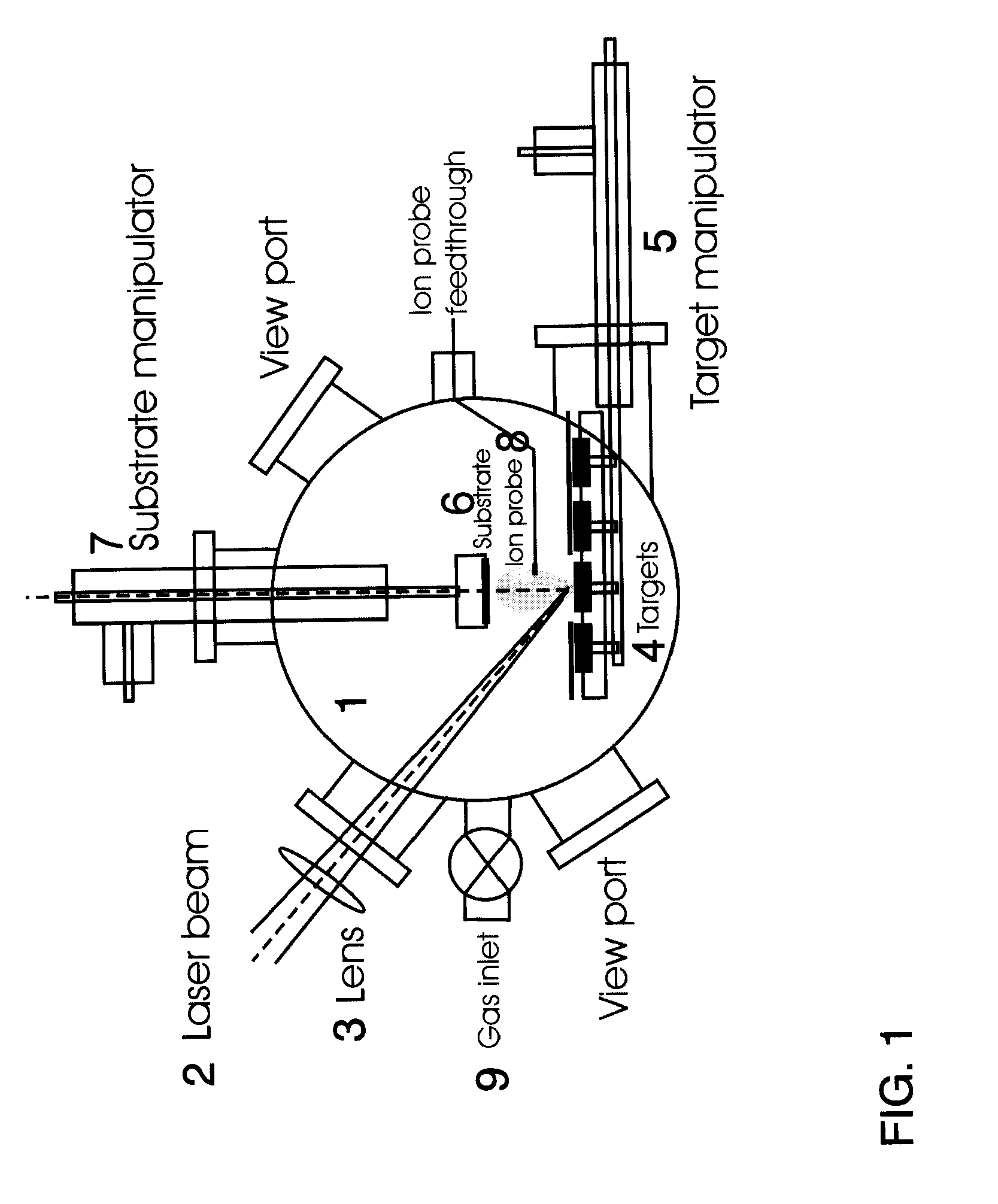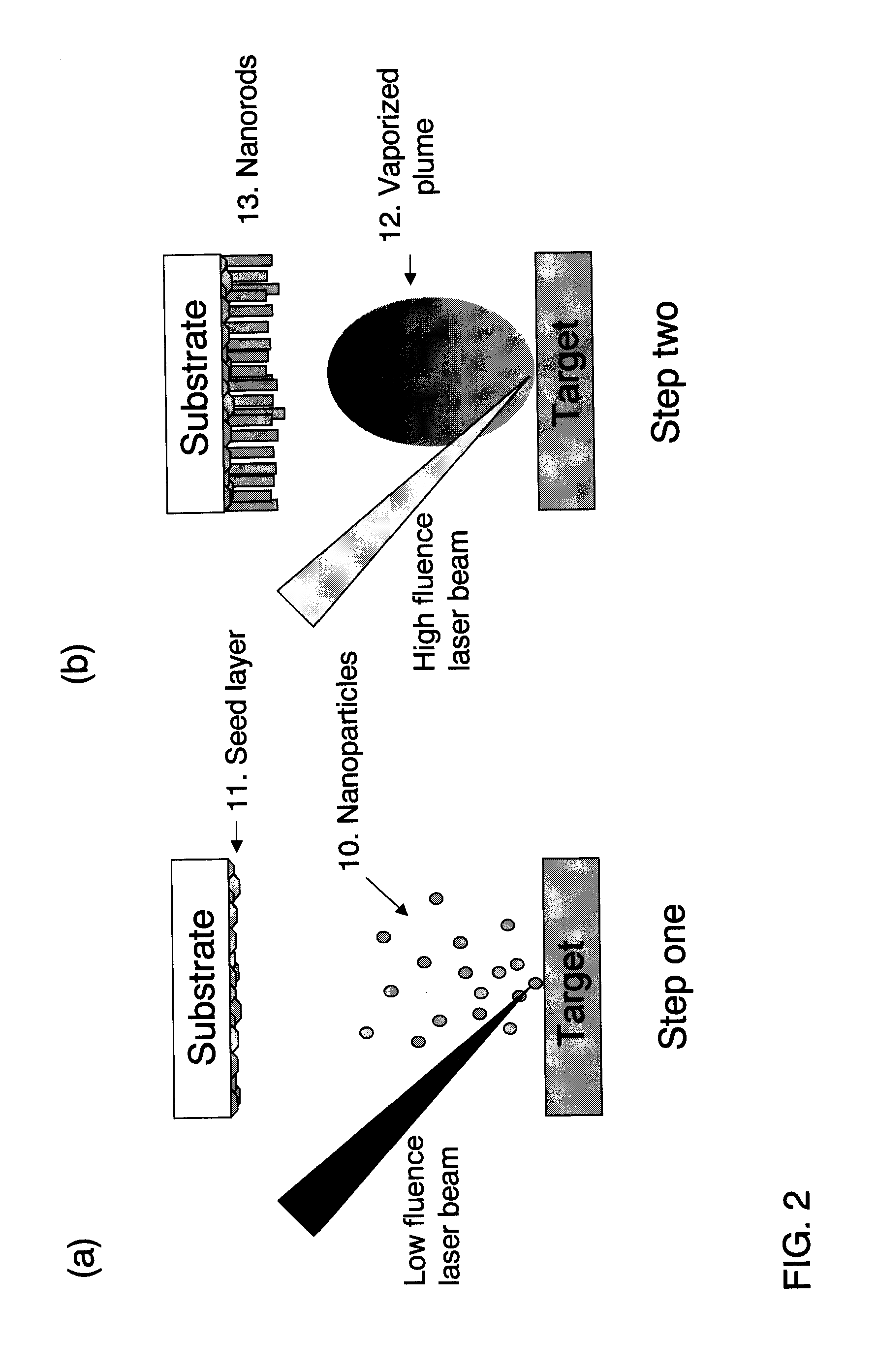Method of producing compound nanorods and thin films
a technology of compound nanomaterials and thin films, applied in the direction of polycrystalline material growth, nuclear engineering, transportation and packaging, etc., can solve the problems of micron scale liquid droplets, undesirable inhomogeneity of deposition, and inevitably evaporated target surface materials, etc., and achieve high laser fluence and high laser fluence
- Summary
- Abstract
- Description
- Claims
- Application Information
AI Technical Summary
Benefits of technology
Problems solved by technology
Method used
Image
Examples
Embodiment Construction
[0025]FIG. 1 illustrates the experimental setup of ultrafast pulsed laser ablation used in this invention. The system basically includes a vacuum chamber for deposition (base pressure 1×10−6 Torr) and an ultrafast pulsed laser for ablation. The chamber contains a target manipulator, a substrate manipulator, and an ion probe. Four disk-like targets can be mounted on the target manipulator. During ablation, the targets rotate and move laterally (i.e., in the target surface plane) back and forth. To improve deposition uniformity, the substrate can also rotate and move in its surface plane. The substrate heater can supply a temperature up to 1000° C. The laser used in the experiments has a pulse duration of 500 fs, a central wavelength of 1.03 μm, a pulse energy up to 100 μJ, and a repetition rate up to several hundreds of kHz. The laser is focused using a lens onto the target surface through a fused silica window. During ablation, a biased charge probe can be inserted in front of the p...
PUM
| Property | Measurement | Unit |
|---|---|---|
| temperature | aaaaa | aaaaa |
| temperature | aaaaa | aaaaa |
| temperature | aaaaa | aaaaa |
Abstract
Description
Claims
Application Information
 Login to View More
Login to View More - R&D
- Intellectual Property
- Life Sciences
- Materials
- Tech Scout
- Unparalleled Data Quality
- Higher Quality Content
- 60% Fewer Hallucinations
Browse by: Latest US Patents, China's latest patents, Technical Efficacy Thesaurus, Application Domain, Technology Topic, Popular Technical Reports.
© 2025 PatSnap. All rights reserved.Legal|Privacy policy|Modern Slavery Act Transparency Statement|Sitemap|About US| Contact US: help@patsnap.com



